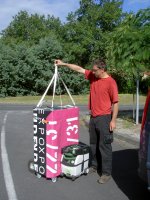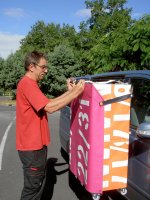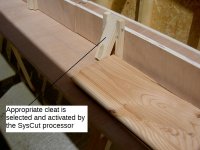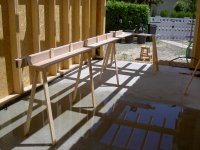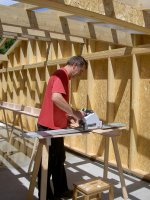evidenttools
Member
- Joined
- Jun 14, 2015
- Messages
- 37
I have hitherto timidly contributed to the FOG, which I nevertheless read daily.
I am a building ingeneer, senior at the French Ministry of Ecology , Sustainable Development and Energy.
I recently created the company “EvidentTools” to value the innovations stemming from my primary business as a building engineer, crossed with an assiduous and successful practice of woodworking, on worksite and in workshops for almost 30 years.
You can see my wood projects by following this link:
http://www.copaindescopeaux.fr/forum/vos-realisations/12466.html
I designed several tools adapted to conduct certains works , or improving working conditions for operators.
Here is one of this innovations, the “Sys Van”, registered with the French Institute of Industrial Property (INPI) . I would certainly put forward further proposals afterwards.
Sys Van is a specific arrangement of the vehicle for craftmen, which allows optimal access to their tools , also facilitating their transfer from the workshop, and even providing a transport solution on site.
My research has shown that there is no equivalent in the market in Europe, the USA or Asia. Though it would meet the expectation of an extremely broad professional audience.
Of course, I offered this product to our two favorite brands ... but for industrial reasons that I can not express here, Festool and Tanos did not follow through.
I am looking for a company interested in this product, likely to acquire the rights, improve, produce and market it. EvidentTools is reachable (in French or English) at the email address evidenttools@outlook.fr.
The cabinet shown here is only a very limited prototype. We must keep in mind its advantages... but quickly forget its design!!! I can offer a much more sophisticated cabinet configuration, much more practical, with many other functionalities that make it suitable for all the nomadic trades in the diversity of their working situations.
In its final outcome, it will be a new solution particularly suited to moves and interventions in dense urban environments (wether for new construction, repair, maintenance, etc...).
Your comments are of course welcome. I present the Sys Van in the following message.
I am a building ingeneer, senior at the French Ministry of Ecology , Sustainable Development and Energy.
I recently created the company “EvidentTools” to value the innovations stemming from my primary business as a building engineer, crossed with an assiduous and successful practice of woodworking, on worksite and in workshops for almost 30 years.
You can see my wood projects by following this link:
http://www.copaindescopeaux.fr/forum/vos-realisations/12466.html
I designed several tools adapted to conduct certains works , or improving working conditions for operators.
Here is one of this innovations, the “Sys Van”, registered with the French Institute of Industrial Property (INPI) . I would certainly put forward further proposals afterwards.
Sys Van is a specific arrangement of the vehicle for craftmen, which allows optimal access to their tools , also facilitating their transfer from the workshop, and even providing a transport solution on site.
My research has shown that there is no equivalent in the market in Europe, the USA or Asia. Though it would meet the expectation of an extremely broad professional audience.
Of course, I offered this product to our two favorite brands ... but for industrial reasons that I can not express here, Festool and Tanos did not follow through.
I am looking for a company interested in this product, likely to acquire the rights, improve, produce and market it. EvidentTools is reachable (in French or English) at the email address evidenttools@outlook.fr.
The cabinet shown here is only a very limited prototype. We must keep in mind its advantages... but quickly forget its design!!! I can offer a much more sophisticated cabinet configuration, much more practical, with many other functionalities that make it suitable for all the nomadic trades in the diversity of their working situations.
In its final outcome, it will be a new solution particularly suited to moves and interventions in dense urban environments (wether for new construction, repair, maintenance, etc...).
Your comments are of course welcome. I present the Sys Van in the following message.


